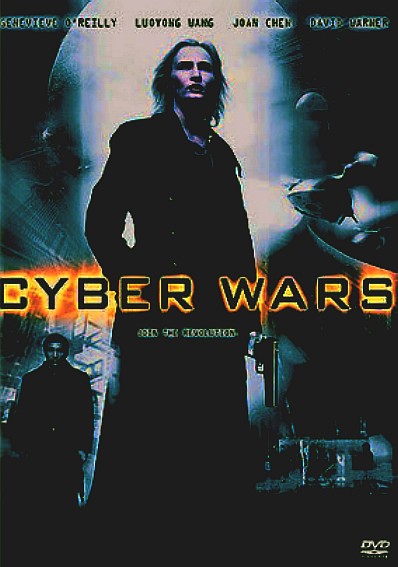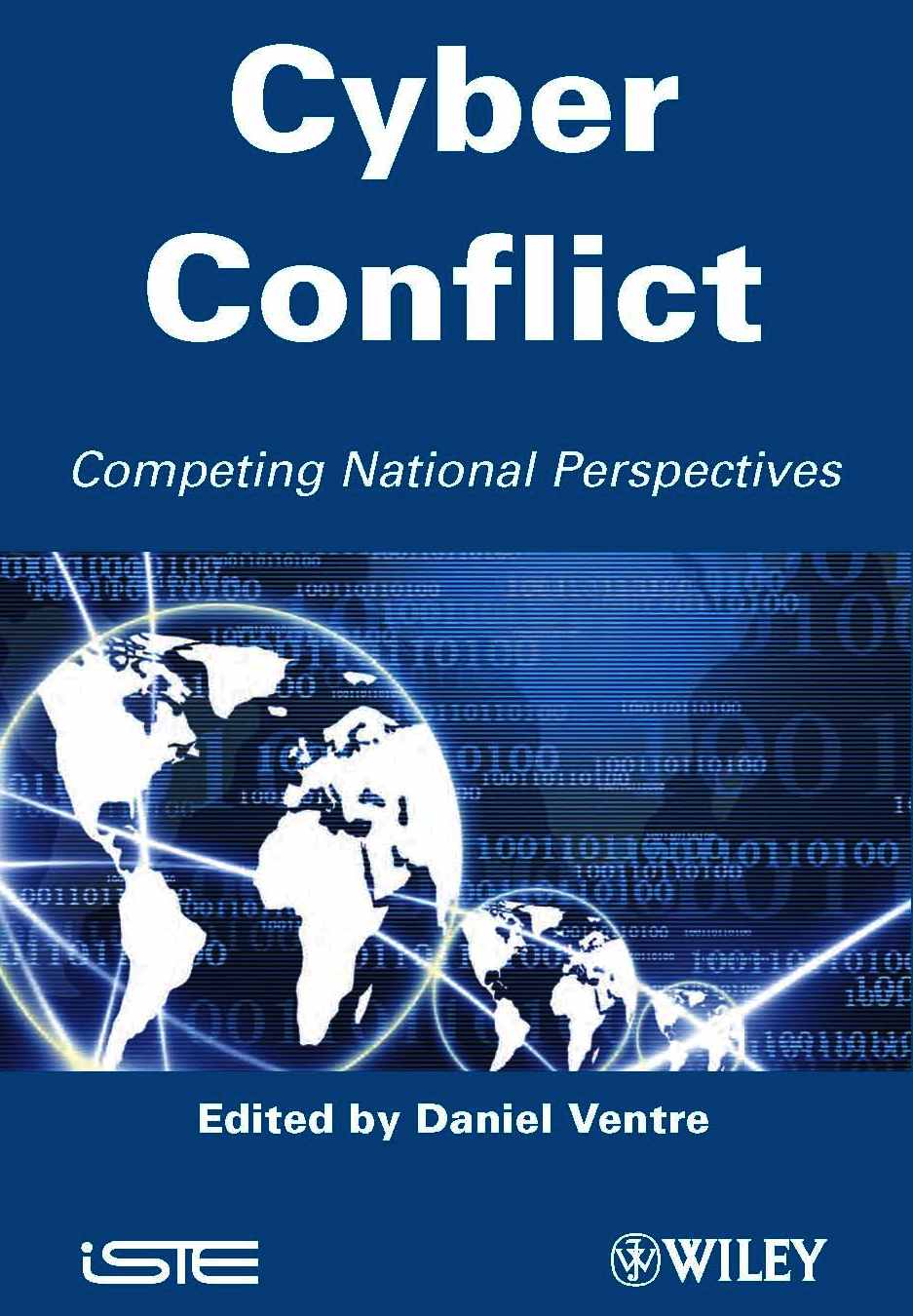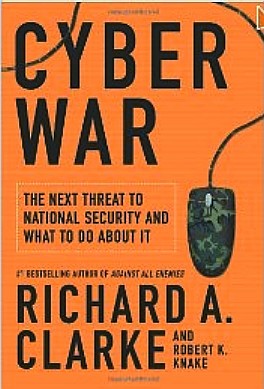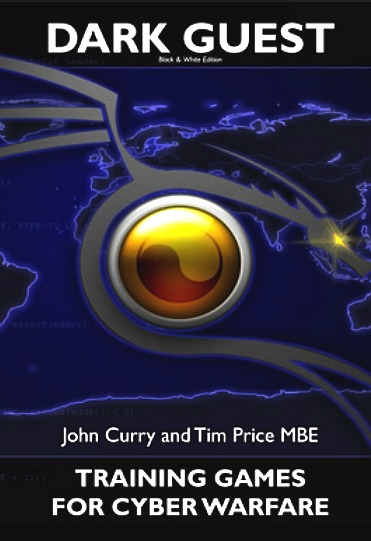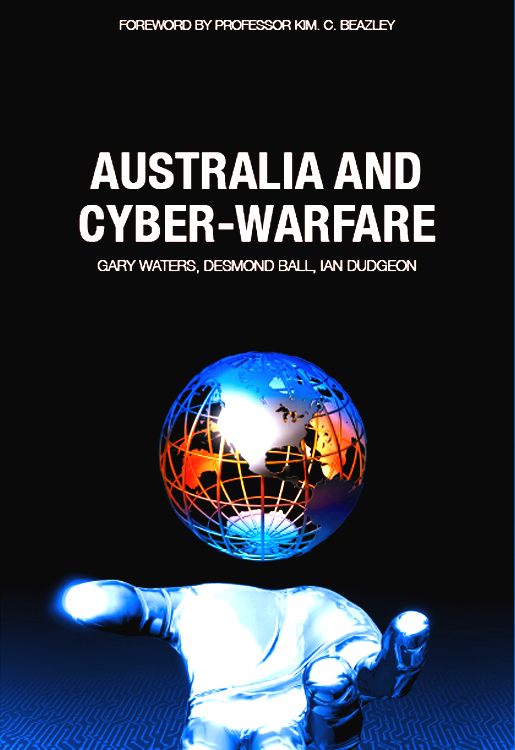
Cyber
warfare
usually refers to politically motivated hacking to conduct sabotage and espionage. It is a form of information warfare sometimes seen as analogous to conventional
warfare although this analogy is controversial for both its accuracy and its political motivation.
There
is another kind of Cyber Warfare that is newly emerging and that
is much the same as the above, in that the object is
infiltration, but the infiltration is not using the internet or
hacking into another countries computers, but infiltrating the
mind. You won't find anything much about that type of Cyber Warfare on
the internet, though there are large numbers of scientists and
revolutionaries working to beat the other to the final solution.
This subject is better dealt with in the Jameson Hunter novel
seen elsewhere on this page.
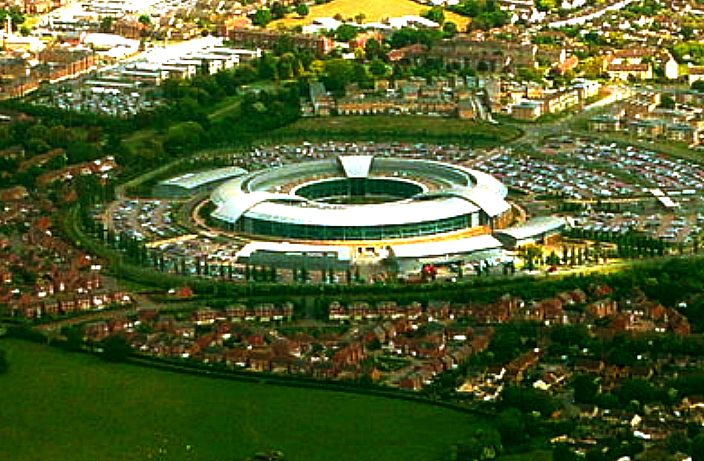
Government Communications Headquarters in the United Kingdom
CONVENTIONAL
CYBER WARFARE
U.S. government security expert Richard A. Clarke, in his book Cyber War (May 2010), defines
"cyberwarfare" as "actions by a nation-state to penetrate another nation's computers or networks for the purposes of causing damage or
disruption.":6 The Economist describes cyberspace as "the fifth domain of
warfare," and William J. Lynn, U.S. Deputy Secretary of Defense, states that "as a doctrinal matter, the Pentagon has formally recognized cyberspace as a new domain in warfare
which has become just as critical to military operations as land, sea, air, and
space."
In 2009, President Barack Obama declared America's digital infrastructure to be a "strategic national asset," and in May 2010 the Pentagon set up its new U.S. Cyber Command
(USCYBERCOM), headed by General Keith B. Alexander, director of the National Security Agency
(NSA), to defend American military networks and attack other countries' systems. The EU has set up ENISA
(European Network and Information Security Agency) which is headed by Prof. Udo Helmbrecht and there are now further plans to significantly expand ENISA's capabilities.. The
United Kingdom has also set up a cyber-security and "operations
centre" based in Government Communications Headquarters (GCHQ), the British equivalent of the
NSA. In the U.S. however, Cyber Command is only set up to protect the military, whereas the government and corporate infrastructures are primarily the responsibility respectively of the Department of Homeland Security and private
companies.
In February 2010, top American lawmakers warned that the "threat of a crippling attack on telecommunications and computer networks was sharply on the
rise." According to The Lipman Report, numerous key sectors of the
U.S. economy along with that of other nations, are currently at risk, including cyber threats to public and private facilities, banking and finance, transportation, manufacturing, medical, education and government, all of which are now dependent on computers for daily
operations. In 2009, President Obama stated that "cyber intruders have probed our electrical
grids."
The Economist writes that China has plans of "winning informationised wars by the mid-21st century". They note that other countries are likewise organizing for
cyberwar, among them Russia, Israel and
North Korea. Iran boasts of having the world's second-largest
cyber-army. James Gosler, a government cybersecurity specialist, worries that the U.S. has a severe shortage of computer security specialists, estimating that there are only about 1,000 qualified people in the country today, but needs a force of 20,000 to 30,000 skilled
experts. At the July 2010 Black Hat computer security conference, Michael Hayden, former deputy director of national intelligence, challenged thousands of attendees to help devise ways to "reshape the Internet's security architecture", explaining, "You guys made the cyberworld look like the north
German
plain."
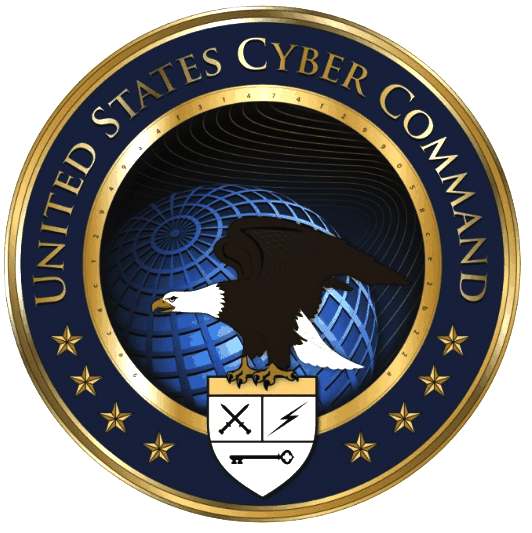
Cyberwarfare consists of many different threats:
Espionage and national security breaches
Cyber espionage is the act or practice of obtaining secrets (sensitive, proprietary or classified information) from individuals, competitors, rivals, groups, governments and enemies also for military, political, or economic advantage using illegal exploitation methods on internet, networks, software and or computers. Classified information that is not handled securely can be intercepted and even modified, making espionage possible from the other side of the world. Specific attacks on the United States have been given codenames like Titan Rain and Moonlight Maze. General Alexander notes that the recently established Cyber Command is currently trying to determine whether such activities as commercial espionage or theft of intellectual property are criminal activities or actual "breaches of national
security."
Sabotage
Military activities that use computers and satellites for coordination are at risk of equipment disruption. Orders and communications can be intercepted or replaced. Power, water, fuel, communications, and transportation infrastructure all may be vulnerable to disruption. According to Clarke, the civilian realm is also at risk, noting that the security breaches have already gone beyond stolen credit card numbers, and that potential targets can also include the electric power grid, trains, or the stock
market.
In mid July 2010, security experts discovered a malicious software program called Stuxnet that had infiltrated factory computers and had spread to plants around the world. It is considered "the first attack on critical industrial infrastructure that sits at the foundation of modern economies," notes The New York
Times.
Electrical power grid
The federal government of the United States admits that the electric power transmission is susceptible to
cyberwarfare. The United States Department of Homeland Security works with industry to identify vulnerabilities and to help industry enhance the security of control system networks, the federal government is also working to ensure that security is built in as the next generation of "smart grid" networks are
developed. In April 2009, reports surfaced that China and Russia had infiltrated the U.S. electrical grid and left behind software programs that could be used to disrupt the system, according to current and former national security
officials.
The North American Electric Reliability Corporation
(NERC) has issued a public notice that warns that the electrical grid is not adequately protected from cyber
attack. China denies intruding into the U.S. electrical grid. One countermeasure would be to disconnect the power grid from the Internet and run the net with droop speed control
only. Massive power outages caused by a cyber attack, could disrupt the economy, distract from a simultaneous military attack, or create a national trauma.
Howard Schmidt, Cyber-Security Coordinator of the US, commented on those
possibilities:
It’s possible that hackers have gotten into administrative computer systems of utility companies, but says those aren’t linked to the equipment controlling the grid, at least not in developed countries. [Schmidt] has never heard that the grid itself has been hacked.
CYBERWARS
WW3
PROPOSED
SCREENPLAY MAP BY CHAPTER (90-110 pages) - ORDER MAY BE VARIED TO
NOVEL SHORT STORY
PART
1.
SCENE
1. - ISTANBUL,
TURKEY, THE BOSPHORUS STRAIT, BYZANTIUM TABLETS, SUNKEN REMAINS
NEAR CONSTANTINOPLE, TURKISH MUSEUM: John
Storm, on a routine artifact dive in the Bosphorus, Istanbul,
stumbles upon a coded message hidden within a smuggled Sumerian
tablet captured by Blue Shield. The message reveals a chilling
covert alliance (Triad) - Russia, Iran,
and North Korea -
codenamed "Red Dragon" - are planning a coordinated
attack. Their goal: global domination.
SCENE
2. - KIDNAP
CHAOS - 'RED DRAGON' - THE CONTROLLING CELL FOR 'OPERATION GRAND
SLAM,' WITH 'GOLDEN CAGE,' & 'MIDNIGHT SUN': Phase
One: The Kidnapping Chaos. 'Red Dragon,'
using advanced sleeper cells and cyberwarfare, orchestrates the
abduction of key political figures from the West - the US
President, the British Prime Minister - Keir
Starmer, the French President - Emmanuel
Macron, and the German Chancellor - Olaf
Scholz. Cutting off the heads of the corrupt capitalist
Dragon.
SCENE
3. - JILL
BIRD, BBC ANCHOR - NEWS REPORT, KIDNAP CHAOS - DEMANDS - MARKETS
IN TURMOIL: World
military are thrown into disarray, communication channels are
jammed, and financial markets plummet - It's a Fire Sale. 'Red
Dragon' broadcasts a chilling message, threatening to kill the
kidnap victims, if their demands are not met. The demands (vast
resource concessions) being a feint.
SCENE
4. - THE
MASTERMIND - The
plan is orchestrated by a shadowy figure deep within the Iranian
government, General
Reza Shah. Shah believes the West is on the verge of
collapse and seeks to exploit their weakness for global
domination. He's been secretly stockpiling gold and weapons for
years, along with building a network of fallout shelters for the
Triad underground elite, about which the West appear oblivious.
SCENE
5. - OPERATION
GRAND SLAM - Intrigued, Storm deciphers
the message with the help of a former Russian intelligence agent
turned informant, Katya
Volkov. With international order on the brink, Hal,
recognizing the coded language from the tablet, deciphers the
Triad's plan. John inadvertently teams up with a brilliant but
jaded ex-KGB agent, Nadia
Petrova, who knows the inner workings of the Triad from
eavesdropping years before. Nadia sends anonymous regular
messages to John. John and Katya discover they reference a
sinister plot: "Operation Grand Slam" - The Motive to
create global chaos as a prelude to an all out nuclear attack.
"Red Dragon" - North Korea, coordinating joint
operations, targeting Iran and North Korea leaders in Operation
Grand Slam. "Midnight
Sun" - A cell to abduct key USA and European leaders,
western politicians for kidnapping - and - Golden
Cage: Refers to a joint operation by Russia (Red Dragon) and
North Korea (Midnight Sun) targeting key Western politicians for
coordinated kidnappings and transits.
SCENE
6. - JOHN
RACES TO NAPLES, JUST TOO LATE TO STOP KIDNAPPINGS - John
and Katya race against time to prevent a series of high-profile
kidnappings, seemingly chasing tails as though Red
Dragon has intel - the US President on
route to G7 summit Naples - Joe
Biden was already missing, so too the
British Prime Minister. The French President, and the German
Chancellor were thought to be next. Red Dragon triggers kidnap
commands timed to opportunistic venues. Of which G7 is ideal for
remaining Europeans. Leaving Xi Jinping, Kim Jong Un and Ali
Khamenei.
SCENE
7. - OUT
OF TIME: They
travel to Tripoli, ending in Bierut, where the trail leading to
Ali Khamenei, Jinping and Jong Un deciphering clues
inadvertently left behind by the kidnappers. Each location tests
John's deciphering skills and Katya's knowledge of international
espionage. But even with Hal they are too late - the trail
disappears. The Cells capture their hostages just minutes before
John gets to the sites.
PART 2.
SCENE
8. - A
MOLE: One
of the kidnapped leaders is suspected as being a double agent
working for Shah. This throws John and Katya off track, forcing
them to question the allegiances of the hostages. Hal fails to
identify any incriminating communications.
SCENE
9. - PRISONERS: The
chase leads to a secret underground facility in Iran, where the
politicians are being held captive. It is seemingly impregnable
reinforced concrete, much like a super bank vault, near Char
Bahar, Gulf of Oman, Arabian
Sea. It is impregnable, without harming the hostages. This
is the Golden
Cage, the European cell was named after.
SCENE
10. - CHAR
BAHAR: John
and Katya must infiltrate the heavily guarded complex and free
the hostages before a nuclear strike is launched on major
Western cities. Hal calculates that a nuclear launch is
imminent, where brute force hacking at NORAD and
other military bases is detected. The clock is ticking, and John
now realizes that the kidnappings are diversionary tactics. But
still he pushes on.
SCENE
11. - MISSION
IMPOSSIBLE: Having taken out the perimeter guards, John
and Katya finally succeed in gaining access to the prisoners the
old fashioned way with thermal lances - a seemingly impossible
mission - freeing the hostages - and transferring the bewildered
heads of state to the Swann by RIB. Then the Swann vanishes into
the Arabian
Sea for a rendezvous with an ageing USS
Vermont, Virginia class nuclear submarine. During transit,
the freed captives talk through John freely, Hal interpreting
telepathically. The freed prisoners cannot believe he
understands so many languages. And his grasp on politics.
SCENE
12. - BBC
WORLD NEWS: Jill Bird item exposes
Shah's plan to the world, discovering and revealing his identity
as leader of Red Dragon, a Cell operating somewhere in the
Middle East, and turning the tide against him. Revealed by Katya
Volkov to John as she admits to having had an affair with the
handsome Iranian General many years previously and was cast
aside, left for dead. Adding pressure to an already knife edge
plan for the Triads.
SCENE
13. - CYBER
CHESS GRAND MASTER: A high-stakes battle ensues involving
advanced weaponry and cunning strategy. With launch and abort
codes changing by the minute as US, Chinese, and Russian
military are running at full pelt to stand still - helpless
against cyber attacks. It's Military main frames from three
locations versus Hal and John Storm, as the fastest computer CyberCore
Genetica™ fends off brute force worms and viruses. It's a
standoff without a final solution. Hal and CyberCore Genetica
effectively block and counter, but need to locate the Cells that
are hosting the attacks.
SCENE
14. - BASE
37 NUCLEAR STRIKE: In cyber defeat and frustrated, Red
Dragon attempts to strike fear into their targets with three
small devices in Beijing, Moscow and Washington. Two devices are
detected and defused. The third detonates at Base 37. This is a
last-ditch effort by Shah's loyalists, saying to the world they
are not safe, thumbing their noses at the CIA, FSB, MI6, Interpol and
other agencies. Meantime, stockpiles of missiles by the
superpowers remain a tempting target for other extremists that
must be eliminated, with the assistance of John's new
'world-leader' friends.
PART
3.
SCENE
15. - PLAYING
WITH FIRE: Hal,
John and Katya, disable the launch sequence for the Russian
missiles. But cannot trace the source code, meaning
transmissions could all begin again. Iranian and Chinese
missiles are still a danger. The situation could rebound against
Red Dragon; if only communist missiles are deactivated. While US
and European missiles could still destroy the antagonists
countries. Their plan could backfire. All hard lines are cut to
Russian, Chinese and Iranian missiles, then manually shut down. Submarine missiles
are systematically deactivated. Finally, US hard lines are cut,
and submarine missile
systems manually turned off. The world breathes a sigh of
relief, Jill
Bird reporting.
SCENE
16. - TREBLE
AGENT: One of the kidnapped leaders is identified as
secretly sympathetic to Shah's cause. His identity becomes known
during debriefing, when John (with Hal present telepathically)
connects the dots, and he is turned around as a treble agent,
used to penetrate further into the Red Dragon Cell, and close
that and hunt down, then arrest of General Reza Shah.
SCENE
17. - BLOODHOUNDS: John
and Katya work together to track down Shah's remaining Cells,
devout followers who fight to the death. John prevails to
prevent further chaos. Within and from these Cells, they obtain
valuable intelligence, much needed passwords and the like.
SCENE
18. - ATOMIC
GOOD SAMARITAN: Using their new information, they take back
control of the launch codes for the Iranian and Chinese
missiles. The temporary administrations in China, Iran and North
Korea plead with John Storm for his help. Not that he wasn't
working double time to save them, but with Hal's help and using
the CyberCore Genetica, they finally defuse the situation.
Control of their missiles is restored. Then neutralized. All
hail to John Storm.
SCENE
19. - KNIGHTS
OF THE GARTER: The root cause of Red Dragon is
revealed as discontent brewing from 2014, when Tony
Blair deceived
Parliament with false intelligence, so initiating the invasion of Iraq by
way of a coalition with US President George
Walker Bush. The Brits knighting their own for such
corruption, and intelligence abuses was the last straw. As the
seeds of hate were revealed, another Petition succeeds in
Blair's KG honour being reviewed with Keir Starmer making
sincere public apology to Iraq. With a promise that the British
honours system will be examined, such as not to ignite future
Red Dragons.
SCENE
20. - CRIME
OF PASSION: Katya
Volkov has a hidden agenda of her own -
revenge over a jilted romance, being used and left for dead. She
takes out Reza Shah, a a personal and simmering crime of passion
- after he goads her, saying how she was used to obtain
information taunting her about Nadia
Petrova - before John can stop her the
General is dead. Honour satisfied, she collapses from shock, the
experience strengthens their partnership, hinting at future
adventures; maybe. John making a mental note not to dally with
her emotions thus. A final message is delivered anonymously: Job
done!
SCENE
21. - NATIONS
REUNITED: The
world grapples
with the fallout of the attack, both literal and geopolitical. A
broadcast transmitted all across the globe, from all the kidnap
victims speaking as one voice, assures the world that they will
now multiply their efforts to work together to resolve their
differences. The first step being to dismantle their nuclear
stockpiles, and agree never to replenish such weapons of mass
destruction. One warning like this being seen as enough. John
receives several honours. Including the 'Hero
of the Russian Federation' (replacing the Order of Lenin),
People's Republic of China Friendship
Medal, Purple
Heart (for being injured while a temporary US
Navy SEAL) and after some debate, the Victoria
Cross, in place of the at first suggested George Cross. And
finally, the Nobel
Peace Prize awarded in Oslo, to a standing
ovation at a UN General assembly later that year. Making John
the winner of a Guinness
Book of Records entry and certificate, for
the person with most multi-national decorations from a single
mission.
Motivations - Military
In the U.S., General Keith B. Alexander, first head of the recently formed
USCYBERCOM, told the Senate Armed Services Committee that computer network warfare is evolving so rapidly that there is a "mismatch between our technical capabilities to conduct operations and the governing laws and policies. Cyber Command is the newest global combatant and its sole mission is cyberspace, outside the traditional battlefields of land, sea, air and space." It will attempt to find and, when necessary, neutralize
cyber-attacks and to defend military computer
networks.
Alexander sketched out the broad battlefield envisioned for the computer warfare command, listing the kind of targets that his new headquarters could be ordered to attack, including "traditional battlefield prizes – command-and-control systems at military headquarters, air defense networks and weapons systems that require computers to
operate."
One cyber warfare scenario, Cyber ShockWave, which was wargamed on the cabinet level by former administration officials, raised issues ranging from the National Guard to the power grid to the limits of statutory
authority.
The distributed nature of internet based attacks means that it is difficult to determine motivation and attacking party, meaning that it is unclear when a specific act should be considered an act of
war.
Civil
Potential targets in internet sabotage include all aspects of the Internet from the backbones of the web, to the Internet Service Providers, to the varying types of data communication mediums and network equipment. This would include: web servers, enterprise information systems, client server systems, communication links, network equipment, and the desktops and laptops in businesses and homes. Electrical grids and telecommunication systems are also deemed vulnerable, especially due to current trends in
automation.
Private sector
Computer hacking represents a modern threat in ongoing industrial espionage and as such is presumed to widely occur. It is typical that this type of crime is underreported. According to McAfee's George Kurtz, corporations around the world face millions of cyberattacks a day. "Most of these attacks don’t gain any media attention or lead to strong political statements by
victims." This type of crime is usually financially motivated.
Cyberwarfare by country
The Internet security company McAfee stated in their 2007 annual report that approximately 120 countries have been developing ways to use the Internet as a weapon and target financial markets, government computer systems and
utilities.
Cyberwarfare in the United States
Cyberwarfare in the United States is the United States military strategy of proactive cyber defence and the use of cyberwarfare as a platform for
attack. The new United States military strategy, makes explicit that a cyberattack is casus belli just as a traditional act of
war.
In January 2012, Mike McConnell, the former director of national intelligence at the National Security Agency under President George W. Bush told the Reuters news agency that the U.S. has already launched attacks on computer networks in other
countries. McConnell did not name the country that the U.S. attacked but according to other sources it may have been
Iran. In June 2012 the New York Times reported that President Obama had ordered the cyber attack on Iranian nuclear enrichment
facilites.
In August 2010, the U.S. for the first time warned publicly about the Chinese military's use of civilian computer experts in clandestine cyber attacks aimed at American companies and government agencies. The Pentagon also pointed to an alleged China-based computer spying network dubbed GhostNet that was revealed in a research report last
year. The Pentagon stated:
"The People's Liberation Army is using "information warfare units" to develop viruses to attack enemy computer systems and networks, and those units include civilian computer professionals. Commander Bob
Mehal, will monitor the PLA's buildup of its cyberwarfare capabilities and will continue to develop capabilities to counter any potential
threat."
The United States Department of Defense sees the use of computers and the Internet to conduct warfare in cyberspace as a threat to national
security. The United States Joint Forces Command describes some of its attributes:
Cyberspace technology is emerging as an "instrument of power" in societies, and is becoming more available to a country's opponents, who may use it to attack, degrade, and disrupt communications and the flow of information. With low barriers to entry, coupled with the anonymous nature of activities in cyberspace, the list of potential adversaries is broad. Furthermore, the globe-spanning range of cyberspace and its disregard for national borders will challenge legal systems and complicate a nation's ability to deter threats and respond to
contingencies.
In February 2010, the United States Joint Forces Command released a study which included a summary of the threats posed by the
internet:
With very little investment, and cloaked in a veil of anonymity, our adversaries will inevitably attempt to harm our national interests. Cyberspace will become a main front in both irregular and traditional conflicts. Enemies in cyberspace will include both states and non-states and will range from the unsophisticated amateur to highly trained professional hackers. Through cyberspace, enemies will target industry, academia, government, as well as the military in the air, land, maritime, and space domains. In much the same way that airpower transformed the battlefield of World War II, cyberspace has fractured the physical barriers that shield a nation from attacks on its commerce and communication. Indeed, adversaries have already taken advantage of computer networks and the power of information technology not only to plan and execute savage acts of terrorism, but also to influence directly the perceptions and will of the U.S. Government and the American population.
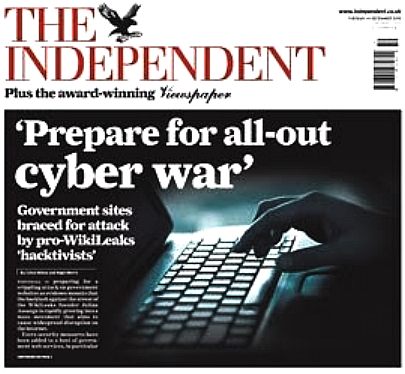
American "Kill switch bill"
On June 19, 2010, United States Senator Joe Lieberman (I-CT) introduced a bill called "Protecting Cyberspace as a National Asset Act of
2010", which he co-wrote with Senator Susan Collins (R-ME) and Senator Thomas Carper (D-DE). If signed into law, this controversial bill, which the American media dubbed the "Kill switch bill", would grant the President emergency powers over parts of the Internet. However, all three co-authors of the bill issued a statement that instead, the bill "[narrowed] existing broad Presidential authority to take over telecommunications
networks".
Cyberwarfare in the People's Republic of China
Diplomatic cables highlight US concerns that China is using access to Microsoft source code and 'harvesting the talents of its private sector' to boost its offensive and defensive
capabilities.
Cyberwarfare in the UK
MI6 reportedly infiltrated an Al Qaeda website and replaced the recipe for a pipe bomb with the recipe for making
cupcakes.
Cyber counterintelligence
Cyber counter-intelligence are measures to identify, penetrate, or neutralize foreign operations that use cyber means as the primary tradecraft methodology, as well as foreign intelligence service collection efforts that use traditional methods to gauge cyber capabilities and
intentions.
On April 7, 2009, The Pentagon announced they spent more than $100 million in the last six months responding to and repairing damage from cyber attacks and other computer network
problems.
On April 1, 2009, U.S. lawmakers pushed for the appointment of a White House cyber security "czar" to dramatically escalate U.S. defenses against cyber attacks, crafting proposals that would empower the government to set and enforce security standards for private industry for the first
time.
On February 9, 2009, the White House announced that it will conduct a review of the nation's cyber security to ensure that the Federal government of the United States cyber security initiatives are appropriately integrated, resourced and coordinated with the United States Congress and the private
sector.
In the wake of the cyberwar of 2007 waged against Estonia, NATO established the Cooperative Cyber Defence Centre of Excellence
(CCD CoE) in Tallinn, Estonia, in order to enhance the organization’s cyber defence capability. The center was formally established on the 14th of May, 2008, and it received full accreditation by NATO and attained the status of International Military Organization on October 28,
2008. Since Estonia has led international efforts to fight
cybercrime, the United States Federal Bureau of Investigation says it will permanently base a computer crime expert in Estonia in 2009 to help fight international threats against computer
systems.
|
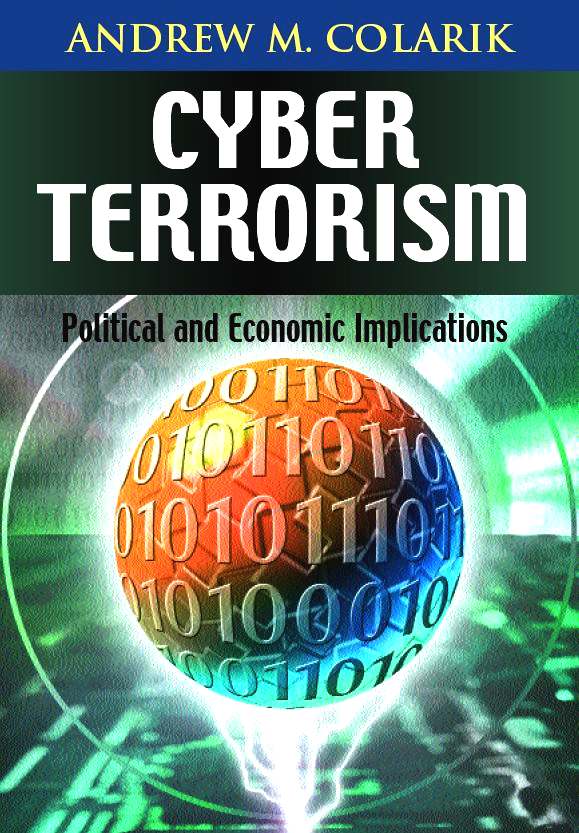
|
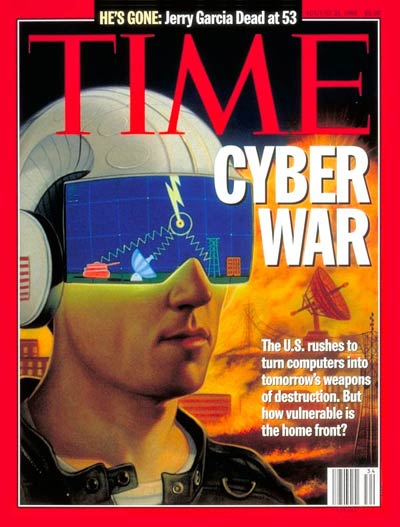
|
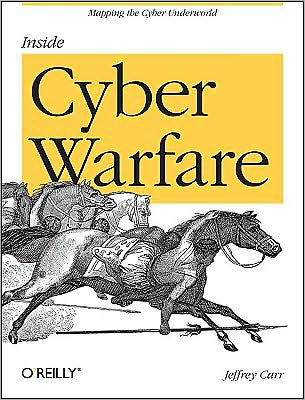
|
|
Cyber
Terrorism - Andrew Colarik |
Cyber
Wars - Time Magazine |
Cyber
Warfare - Jeffrey Carr |
|
|
|
|
Controversy over terms
There is debate on whether the term "cyberwarfare" is accurate. In October 2011, for instance, the Journal of Strategic Studies, a leading journal in that field, published an article by Thomas Rid, "Cyber War Will Not Take Place." An act of cyber war would have to be potentially lethal, instrumental, and political. Then not one single cyber offense on record constitutes an act of war on its own. Instead, all politically motivated cyber attacks, Rid argued, are merely sophisticated versions of three activities that are as old as warfare itself: sabotage, espionage, and
subversion.
Howard Schmidt, an American cybersecurity expert, argued in March 2010 that "there is no
cyberwar... I think that is a terrible metaphor and I think that is a terrible concept. There are no winners in that environment." Other experts, however, believe that this type of activity already constitutes a
war. The warfare analogy is often seen intended to motivate a militaristic response when that is not necessarily appropriate. Ron
Deibert, of Canada's Citizen Lab, has warned of a "militarization of
cyberspace."
The European cybersecurity expert Sandro Gaycken argued for a middle position. He considers cyberwar from a legal perspective an unlikely scenario, due to the reasons lined out by Rid (and, before him,
Sommer), but the situation looks different from a strategic point of view. States have to consider military-led cyber operations an attractive activity, within and without war, as they offer a large variety of cheap and risk-free options to weaken other countries and strengthen their own positions. Considered from a long-term, geostrategic perspective, cyber offensive operations can cripple whole economies, change political views, agitate conflicts within or among states, reduce their military efficiency and equalize the capacities of high-tech nations to that of low-tech nations, and use access to their critical infrastructures to blackmail
them.
|
Cyber
Wars in China - Youtube
|
Cyber
Wars security - Youtube
|
|
Cyber
Wars FBI hacked - Youtube
|
Cyber
Wars
RSA conference- Youtube
|
|
Cyber
Wars USA - Youtube
|
Cyber
Wars UK
- Youtube
|
Incidents
In 2012, in a startling volley of allegations, India has been accused of hacking a U.S commission's e-mail communications, which primarily dealt with the economic and security relations between U.S and China. Reports confirm that hackers from an Indian government spy unit managed to post on the Internet, what is being understood be an Indian military intelligence document on cyber-spying. The document, reportedly discussed at length on ways to target the U.S - China commission aided with the expertise lent by western mobile phone manufacturers. The document, reportedly, also included transcripts of the emails exchanged between members of the
commission.
On November 21, 2011, it was widely reported in the U.S. media that a hacker had destroyed a water pump at the Curran-Gardner Township Public Water District in
Illinois. However, it later turned out that this information was not only false, but had been inappropriately leaked from the Illinois Statewide Terrorism and Intelligence
Center.
On October 6, 2011, it was announced that Creech AFB's drone and Predator fleet's command and control data stream has been
keylogged, resisting all attempts to reverse the exploit, for the past two
weeks. The Air Force issued a statement that the virus had "posed no threat to our operational
mission".
In July 2011, the South Korean company SK Communications was hacked, resulting in the theft of the personal details (including names, phone numbers, home and email addresses and resident registration numbers) of up to 35 million people. A trojaned software update was used to gain access to the SK Communications network. Links exist between this hack and other malicious activity and it is believed to be part of a broader, concerted hacking
effort.
Operation Shady RAT is an ongoing series of cyber attacks starting mid-2006, reported by Internet security company McAfee in August 2011. The attacks have hit at least 72 organizations including governments and defense
contractors.
On December 4 2010, a group calling itself the Pakistan Cyber Army hacked the website of India's top investigating agency, the Central Bureau of Investigation (CBI). The National Informatics Center
(NIC) has begun an inquiry.
On November 26 2010, a group calling itself the Indian Cyber Army hacked the websites belonging to the Pakistan Army and the others belong to different ministries, including the Ministry of Foreign Affairs, Ministry of Education, Ministry of Finance, Pakistan Computer Bureau, Council of Islamic Ideology, etc. The attack was done as a revenge for the Mumbai terrorist
attacks.
In October 2010, Iain Lobban, the director of the Government Communications Headquarters
(GCHQ), said Britain faces a "real and credible" threat from cyber attacks by hostile states and criminals and government systems are targeted 1,000 times each month, such attacks threatened Britain’s economic future, and some countries were already using cyber assaults to put pressure on other
nations.
In September 2010, Iran was attacked by the Stuxnet worm, thought to specifically target its Natanz nuclear enrichment facility. The worm is said to be the most advanced piece of malware ever discovered and significantly increases the profile of
cyberwarfare.
In May 2010, In response to Indian Cyber Army defacing Pakistani websites, 1000+ Indian websites were defaced by
PakHaxors, TeaMp0isoN, UrduHack & ZCompany Hacking Crew, among those were the Indian CID website, local government of
Kerala, Box Office of Indian, Brahmos missile website, Indian HP helpdesk, Indian Institute of Science, and The Indian Directorate General of
Shipping.
In July 2009, there were a series of coordinated denial of service attacks against major government, news media, and financial websites in South Korea and the United
States. While many thought the attack was directed by North Korea, one researcher traced the attacks to the United
Kingdom.
Russian, South Ossetian, Georgian and Azerbaijani sites were attacked by hackers during the 2008 South Ossetia
War.
In 2007 the website of the Kyrgyz Central Election Commission was defaced during its election. The message left on the website read "This site has been hacked by Dream of Estonian organization". During the election campaigns and riots preceding the election, there were cases of Denial-of-service attacks against the Kyrgyz
ISPs.
In September 2007, Israel carried out an airstrike on Syria dubbed Operation Orchard. U.S. industry and military sources speculated that the Israelis may have used cyberwarfare to allow their planes to pass undetected by radar into
Syria.
In April 2007, Estonia came under cyber attack in the wake of relocation of the Bronze Soldier of
Tallinn. The largest part of the attacks were coming from Russia and from official servers of the authorities of
Russia. In the attack, ministries, banks, and media were
targeted.
In the 2006 war against Hezbollah, Israel alleges that cyber-warfare was part of the conflict, where the Israel Defense Force
(IDF) intelligence estimates several countries in the Middle East used Russian hackers and scientists to operate on their behalf. As a result, Israel attached growing importance to cyber-tactics, and became, along with the U.S., France and a couple of other nations, involved in cyber-war planning. Many international high-tech companies are now locating research and development operations in Israel, where local hires are often veterans of the IDF's elite computer
units. Richard A. Clarke adds that "our Israeli friends have learned a thing or two from the programs we have been working on for more than two
decades.":8
Efforts at prohibition
The Shanghai Cooperation Organisation (members include China and Russia) defines cyberwar to include dissemination of information "harmful to the spiritual, moral and cultural spheres of other states". In September 2011, these countries proposed to the UN Secretary General a document called "International code of conduct for information
security". The approach was not endorsed by western countries as it entailed too many hints on political censorship of the internet.
In contrast, the United States' approach focuses on physical and economic damage and injury, putting political concerns under freedom of speech. This difference of opinion has led to reluctance in the West to pursue global cyber arms control
agreements. However, American General Keith B. Alexander did endorse talks with Russia over a proposal to limit military attacks in
cyberspace.
A Ukrainian professor of International Law, Alexander Merezhko, has developed a project called the International Convention on Prohibition of Cyberwar in Internet. According to this project, cyberwar is defined as the use of Internet and related technological means by one state against political, economic, technological and information sovereignty and independence of any other state. Professor Merezhko's project suggests that the Internet ought to remain free from warfare tactics and be treated as an international landmark. He states that the Internet (cyberspace) is a "common heritage of
mankind."
LINKS:
-
DOD
– Cyberspace
-
Cyberwar:
War in the Fifth Domain Economist
July 1, 2010
-
Defending
a New Domain: The Pentagon's Cyberstrategy Foreign
Affairs, Sept/Oct. 2010
-
The
Lipman Report 15-10-2010
-
China's
Cyberassault on America, Wall
Street Journal, June 15, 2011
-
Cyberwarrior
Shortage Threatens U.S. Security NPR, July 19,
2010
-
U.S.
military cyberwar: What's off-limits CNET, July
29, 2010
-
Cyberspace
and the changing nature of warfare
-
Clarke:
More defense needed in cyberspac HometownAnnapolis.com,
Sept. 24, 2010
-
Malware
Hits Computerized Industrial Equipmen New York Times,
Sept. 24, 2010
-
BBC:
Spies 'infiltrate US power grid BBC News
-
Video.
CNN (2009-04-08)
-
Reuters:
US concerned power grid vulnerable to cyber-attack.
In.reuters.com (2009-04-09)
-
Electricity
Grid in U.S. Penetrated By Spies. Online.wsj.com
-
Video.
Fox News (2011-05-01)
-
NERC
Public Notice. (PDF)
-
Xinhua:
China denies intruding into the U.S. electrical grid 9
April 2009
-
'China
threat' theory rejected. China Daily (2009-04-09)
-
ABC
News: Video. Abcnews.go.com (2009-04-20)
-
Disconnect
electrical grid from Internet, former terror czar Clarke
warns (2009-04-08)
-
White
House Cyber Czar: ‘There Is No Cyberwar Wired
magazine, March 4, 2010
-
Cyber-War
Nominee Sees Gaps in Law New York Times, April
14, 2010
-
Cyber
ShockWave Shows U.S. Unprepared For Cyber Threats.
Bipartisanpolicy.org
-
In
a doomsday cyber attack scenario, answers are unsettling
Drogin, Bob (February 17,
2010)
-
Washington
Group Tests Security in ‘Cyber ShockWave' The Wall
Street Journal 16-2-10
-
Cyber
ShockWave CNN/BPC wargame: was it a failure?
(2010-02-17)
-
Report:
The Cyber ShockWave event and its aftermath The Tech
Herald. February 16 2010
-
Google
Attack Is Tip Of Iceberg McAfee Security Insights,
January 13, 2010
-
Government-sponsored
cyberattacks on the rise, McAfee says. Networkworld.com
(2007-11-29)
-
American
Forces Press Service: Lynn Explains U.S. Cybersecurity
Strategy. Defense.gov
-
Pentagon
to Consider Cyberattacks Acts of War. New York Times. 31
May 2006
-
https://rt.com/usa/news/us-attacks-cyber-war-615/
Russia Today, 26 Jan.
2012
-
Obama
Order Sped Up Wave of Cyberattacks Against Iran New
York Times, June 1, 2012.
-
Congress
Report Military and Security Developments Involving
People’s Republic of China 2010
-
The
Joint Operating Environment", Report released, Feb.
18, 2010, pp. 34–36
-
Bill.
Homeland Security Act of 2002 the security of cyber
communications of the United States.
-
Senators
Say Cybersecurity Bill Has No 'Kill Switch
informationweek.com, June 24, 2010
-
US
embassy fears: China
uses Microsoft source code to plot cyber warfare
-
http://www.csmonitor.com/USA/Al-Qaeda-rocked-by-apparent-cyberattack
-
DOD
– Cyber Counterintelligence. Dtic.mil
-
Pentagon
Bill To Fix Cyber Attacks: $100M. CBS News
-
Senate
Legislation Would Federalize Cybersecurity.
Washingtonpost.com
-
White
House Eyes Cyber Security Plan. CBS News (2009-02-10)
-
CCD
COE – Cyber Defence. Ccdcoe.org.
-
FBI
to station cybercrime expert in Estonia.
BostonHerald.com
-
Cyber
War Will Not Take Place Journal of Strategic Studies
-
Tracking
the emerging arms race in cyberspace Bulletin of the
Atomic Scientists 67 (1)
-
Reducing
Systemic Cybersecurity Risk OECD Multi-Displinary
Issues
-
Cyberwar
- Das Internet als Kriegsschauplatz
-
Hacker
Apparently Triggers Illinois Water Pump Burnout
Information Week
-
Exclusive:
Comedy of Errors Led to False ‘Water-Pump Hack’ Report
Wired.com
-
U.S.
drone and predator fleet is being keylogged
-
Air
Force says drone computer virus poses 'no threat' LA
Times, 13 October 2011.
-
SK
Hack by an Advanced Persistent Threat Command Five Pty
Ltd
-
State
actor seen in "enormous" range of cyber attacks
Reuters
-
Hacked
by 'Pakistan cyber army', CBI website still not restored.
Ndtv.com (2010-12-04)
-
36
government sites hacked by ‘Indian Cyber Army’ – The
Express Tribune. Tribune.com.pk
-
Britain
faces serious cyber threat, spy agency head warns. The
Globe and Mail (2010-10-13)
-
AFP:
Stuxnet worm brings cyber warfare out of virtual world.
Google.com (2010-10-01)
-
Ralph
Langner: Cracking Stuxnet, a 21st-century cyber weapon |
Video on. Ted.com
-
New
cyberattacks hit South Korea. BBC News
-
UK,
Not North Korea, Source of DDOS Attacks, Researcher Says.
PC World.
-
Coordinated
Russia vs Georgia cyberattack ZDnet
-
Website
of Kyrgyz Central Election Commission hacked by Estonian
hackers,Regnum, 14-12-07
-
Why
Syria's Air Defenses Failed to Detect Israelis Aviation
Week & Space Technology 2007-10-03
-
Israel
electronic attack air strike against Syrian mystery target
2007-10-08
-
"War
in the fifth domain. Are the mouse and keyboard the new
weapons of conflict?
-
Estonia
accuses Russia of 'cyber attack Csmonitor.com
(2007-05-17)
-
Russia
accused of unleashing cyberwar to disable Estonia The
Guardian, May 17, 2007
-
BBC:
Cyber-war a growing threat warn experts. BBC News
-
Israel
Adds Cyber-Attack to IDF Military.com, Feb. 10,
2010
-
Seeing
The Internet As An 'Information Weapon' National
Public Radio
-
WSJ:
U.S. Backs Talks on Cyber Warfare. Online.wsj.com
-
Український
центр
політичного
менеджменту
– Зміст
публікації
Politik.org.ua
-
270
Cyberwarfare related books
-
Cyber
ShockWave (simulation of a cyber attack), Feb. 16, 2010
-
ABC:
Former White House security advisor warns of cyber war
-
Wall
Street Journal: Fighting Wars in Cyberspace
-
Will
There Be An Electronic Pearl Harbor, PC World by Ira
Winkler, Dec 1 2009
-
How
to Spot a Corporate Spy, Computer World, Feb 6 2009
-
US
China Security and Review Commission, 2009 annual report
-
Senate
panel: 80 percent of cyberattacks preventable, Wired,
Nov 17 2009
-
Consumer
Reports Online Security Guide
-
Fox
News: Updated Cybersecurity information
-
Cyberwarfare
reference materials
-
Infowar
Monitor
-
Cyber,
War and Law
-
Information
Warfare
-
Information
about cybercrime and Warfare
-
GCHQ:
Britain's Most Secret Intelligence Agency
-
Duncan
Gardham, 26 June 2009, Hackers
recruited to fight 'new cold war', Telegraph UK
-
Stefano
Mele, 30 September 2010, Cyberwarfare
and its damaging effects on citizens
A
taste for adventure

Solar
Cola - the healthier cola alternative
|

